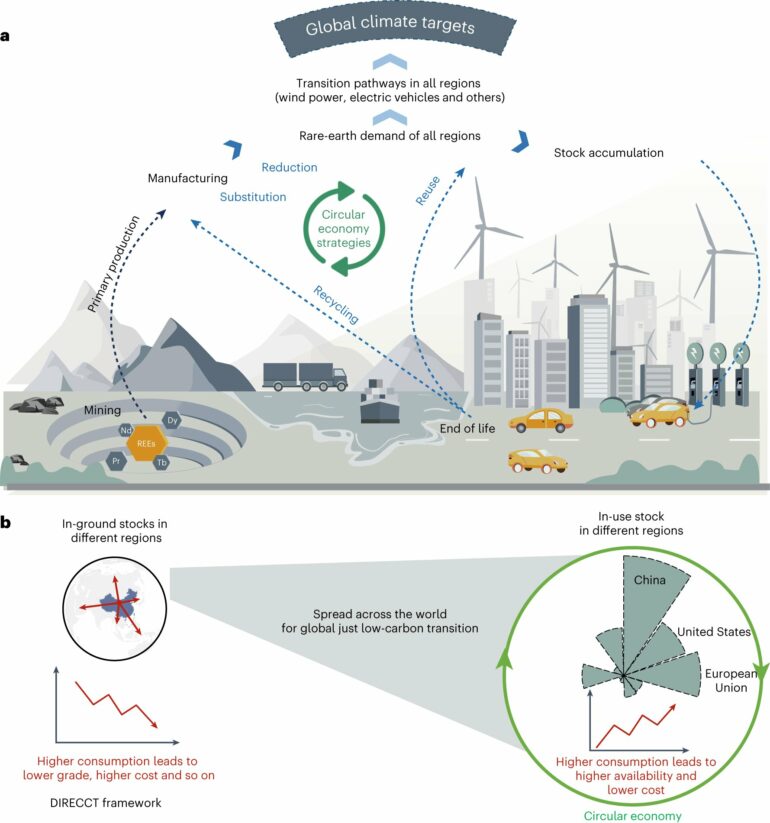Circular economy strategies could significantly boost the low-carbon global transition and make sure that rare earth elements (REE) do last longer, reveals new study published in Nature Geoscience.
REE are, by definition, rare and finite. Researchers have presented a novel integrated model that quantifies how circular economy strategies can reshape global supply chains of critical rare earth elements, such as neodymium, dysprosium and terbium. Their analysis shows that circular economy strategies can lead to an increase of 701 kt secondary supply and a decrease of 2,306 kt demand within the next three decades.
REEs play a crucial role in the manufacturing of various technologies that are essential to deliver low-carbon energy and transportation systems. Given the limited supply from in-ground REE mines, circular economy strategies have gained attention as potential solutions to address supply chain issues. However, the specific impacts of these strategies on global REE supply and demand landscape remain largely unknown.
To address this knowledge gap, the international team of researchers, involving Newcastle University, developed an integrated model to explore the complex linkages between REEs and climate pledges, and quantify the potential of circular economy strategies to reshape global supply chains of REEs.
Their findings show a significant mismatch between in-ground stocks, supply and demand at specific region and element levels, with the mismatch for the supply of heavy rare earth elements being a key obstacle to achieve net-zero emission targets.
Reshaping global REE supply chains
The study highlights the crucial roles of circular economy strategies, including reduction, substitution, reuse, and recycling, which will reshape the global REE supply chains. The implementation of these strategies will lead to an increase in REE supply from urban mines within the next three decades, which can significantly reduce the dependency on mining REE. Some regions like EU might also achieve a closed-loop REE supply with the implementation of circular economy strategies.
Featured on the cover of Nature Geoscience, the study involved researchers from the Institute of Urban Environment of the Chinese Academy of Sciences, Peking University, Newcastle University, Leiden University in the Netherlands, and other institutions.
Study author, Professor Oliver Heidrich, Professor of Civil and Environmental Engineering, Newcastle University School of Engineering, said, “Our model considers both in-ground stocks and in-use stocks, as well as their quite dramatic geographic shift across ten regions from 2001 to 2050 under three widely accepted climate scenarios. Our study does shed important light on the demands and supplies and provides a good understanding of the geopolitical dynamics, climate goals and how the natural resources could be used for political gains.”
The findings can serve as the scientific basis for international cooperation in promoting the circular economy strategies of REE for global and just low-carbon transitions.
More information:
Peng Wang et al, Regional rare-earth element supply and demand balanced with circular economy strategies, Nature Geoscience (2024). DOI: 10.1038/s41561-023-01350-9
Provided by
Newcastle University
Citation:
Maximizing circular economy strategies for rare earth elements supply (2024, January 4)



